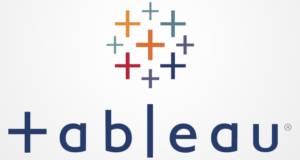Most individuals would agree that the quality of your research and insights depends on the data you are using. rubbish in, then, equals rubbish analysis out. If you want to establish a culture in your company where quality data decision-making is valued, one of the most crucial tasks is data cleaning, which is also known as Tableau data cleansing and data scrubbing.
What is data cleaning Tableau?
The practice of repairing or eliminating inaccurate, corrupted, improperly formatted, duplicate, or incomplete data from a dataset is known as data cleaning. It is common for data to be mislabeled or duplicated when integrating different data sources. Even though results and algorithms appear correct, they are unreliable if the data is inaccurate. Since the procedures will differ depending on the dataset, there is no one set method that can be used to prescribe the precise steps in the data-cleaning process. However, in order to ensure that you are cleaning data correctly each and every time, you must create a template for your procedure. To learn more about Data cleaning, check out the online Tableau course.
What is the difference between data cleaning and data transformation?
Removing information from your dataset that doesn’t belong there is known as data cleaning. The process of transforming data from one format or structure into another is known as data transformation. The terms “data wrangling” and “data munging” can also be used to describe transformation operations, which involve mapping and changing data from one “raw” data type into another for storage and analysis. This article is mostly concerned with the data cleansing procedures.
How to clean data
These fundamental phases can help you create a framework for your company’s data cleansing process, even though the methods employed will depend on the kinds of data that your organisation stores.
Step 1: Eliminate redundant or unrelated observations
Eliminate duplicate or unnecessary observations, as well as any undesirable observations, from your dataset. The majority of duplicate observations will occur when gathering data. Duplicate data can be created when you scrape data, merge data sets from various sources, or get data from different departments or clients. One of the most important things to take into account in this procedure is deduplication. When you discover observations that do not fit within the particular topic you are seeking to examine, those observations are considered irrelevant. For instance, you may eliminate those pointless observations if your dataset includes older generations but you wish to study data on millennial clients. This can reduce distraction from your main goal and increase the efficiency of your research while also producing a more manageable and effective dataset.
Step 2: Fix any structural errors
When you measure or transfer data and find odd naming practices, typos, or wrong capitalization, those are known as structural mistakes. Mislabeled categories or classifications may result from these discrepancies. For instance, “N/A” and “Not Applicable” might both show up, but they should be analysed as the same category.
Step 3: Filter unwanted outliers
One-off observations frequently occur that, at first look, don’t seem to fit the data you are examining. Removing an outlier for a valid reason (e.g., incorrect data input) will improve the performance of the data you work with. On the other hand, occasionally an outlier’s appearance will support a theory you’re working on. Recall that an outlier does not always indicate that something is wrong. To ascertain whether that number is legitimate, use this procedure. If an outlier turns out to be erroneous or unimportant for analysis, it should be eliminated.
Step 4: Handle missing data
Since many algorithms will not accept missing values, you cannot overlook missing data. There are two approaches to handling missing data. While neither is ideal, both are viable options.
- The first approach is to eliminate observations with missing values but be aware that doing so will result in the loss or decline of information.
Another way to compromise the integrity of the data is to enter missing numbers based on other observations; however, this may lead to you working with assumptions rather than actual observations.
- As a third option, you might change how null values are navigated by using the data differently.
Step 5: Validate and QA
As part of basic validation, you ought to be ready to respond to these queries once the data-cleaning procedure is complete:
- Is the data consistent?
- Does the data adhere to the standards that are relevant to its field?
- Does it support or contradict your working hypothesis, or does it shed any light on it?
- Is it possible to identify patterns in the data to inform your next theory?
- If not, is there a problem with the quality of the data?
Inaccurate or “dirty” data can lead to false conclusions, which can impact bad corporate strategy and decision-making. When you discover your data doesn’t hold up to inspection in a reporting meeting, false conclusions can result in an awkward situation. It’s critical to establish a culture of quality data in your company before you arrive. You should record the resources you may utilise to establish this culture as well as your definition of data quality in order to do this.
Components of quality data
Examining a data set’s attributes and evaluating them based on what matters most to your company and the application(s) it will be utilised for will help you determine the quality of the data.
5 characteristics of high-quality data
- Reliability: The extent to which your data complies with established business guidelines or limitations.
Precision: Make sure the data you have is near the actual values.
- Wholeness: the extent of knowledge of all necessary data.
- Consistency: Make sure the data you use is consistent within datasets and/or between datasets.
- Uniformity: how closely the data are stated in terms of the same unit of measurement.
Advantages and benefits of data cleaning
In the end, having clean data will boost overall productivity and enable you to make decisions with the best possible knowledge. Benefits consist of:
- Error elimination in situations where several data sources are involved.
- Clients are happier and staff are less irritated when mistakes are made.
- the capacity to map the many roles and purposes of your data.
- Errors can be tracked and reported on more effectively, enabling the easy correction of inaccurate or damaged data for use in future applications.
- Using data-cleaning techniques can lead to faster decision-making and more effective corporate processes.
Data cleaning tools and software for efficiency
By offering simple, visual methods for merging and cleaning your data, Tableau Prep software can assist you in fostering a culture of quality data. Tableau Prep consists of two products: Tableau Prep Conductor, which is used to schedule, monitor, and manage flows throughout your business, and Tableau Prep Builder, which is used to construct your data flows. A database administrator can save a lot of time by using a data cleansing tool, which helps analysts and administrators begin their studies more quickly and with greater confidence in the data. Making successful and efficient business decisions requires an understanding of data quality and the tools required to create, manage, and convert data. This important procedure will help your company further establish a data culture.
Conclusion To learn more about Tableau, check out the Tableau online training.





























